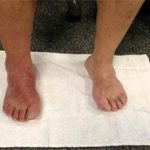About CRPS
What Is CRPS
Complex regional pain syndrome (CRPS) is a chronic pain condition which, as its name suggests, is very complex and it is most likely to affect a single limb. It is classified into CRPS-1, and CRPS-2. CRPS symptoms include
- burning pain,
- allodynia (pain from a non-painful stimulus such as touch) and hyperalgesia (increased response to a painful stimulus)
- motor disturbances
- tremor and muscle spasms
- changes in vascular tone, temperature, skin colour, sweating and oedema, and
- changes to skin, hair, nails and perceptual disturbances with distortions to the body-self.

CRPS-1 can occur spontaneously or following trauma, with the symptoms unrelated to the region of a single nerve, and unequal to the event. CRPS-2 occurs in association with nerve damage.
Cause Of CRPS
Very little is known about the aetiology of CRPS. The initial cause may be a strain or minor tissue injury that develops into this complex, abnormal health problem. Secondary symptoms can then develop including signs from the somatosensory nervous system, the neuromuscular-system, and the autonomic nervous system which creates a confusing picture.
It was originally proposed that the Sympathetic Nervous System (SNS) was the main driver for CRPS symptoms, hence the old name Reflex Sympathetic Dystrophy (RSD). However, it is now believed that the SNS is not the sole cause of CRPS, as sympathetic nerve blocks did not provide significant relief from the pain. If it had been caused by the SNS, a sympathetic nerve block should stop the pain.
Based on many physiological and functional imaging studies there is significant evidence that in chronic pain, reorganisation of the primary somatosensory cortex, the secondary somatosensory cortex, and the motor cortex can occur. It has been demonstrated that the degree of reorganisation is directly related to the intensity of CRPS pain.
One theory about why the reorganisation may happen is that pain leads to “protective disuse”. You may not want to move the limb as you are worried it may hurt. This anticipation of pain can become a learned reaction and you may produce pain on just thinking about movement. The “protective disuse” can also lead to a smaller representation of that limb in the brain. Pain can therefore be induced by a mismatch between proprioceptive feedback and motor action.
Another theory is neurogenic inflammation. This involves an increase of inflammatory mediators in the blood, which have been found in people with CRPS. It is thought that the elevation of these substances occurs because they continue to be active after their release, hence promote inflammation. Another suggestion is that more receptors are available to receive them. This results in some of the symptoms of CRPS such as increased temperature, skin reddening, oedema and increased pain responses.
CRPS treatment has proven very difficult due to the lack of understanding around it. Many different modalities have been used, including medical management (analgesics, steroids, supplements), interventional treatments (sympathetic nerve blocks, sympathectomy, amputation and spinal cord stimulator insertion) and physiotherapy (including mirror box therapy). Although approximately 150–200 techniques have been proposed for the treatment and prevention, it is still very difficult to treat.
Find Out More About Mirror Therapy For CRPS/RSD Here